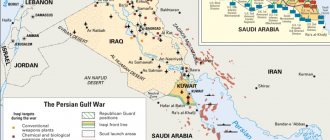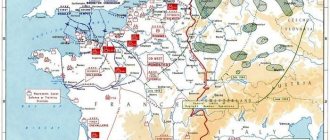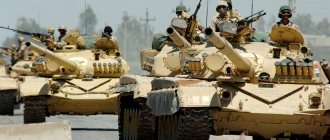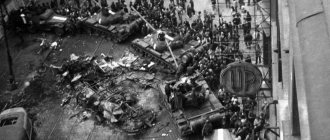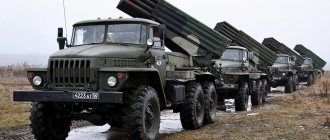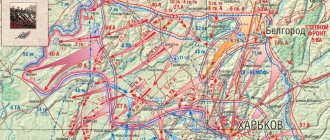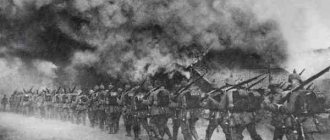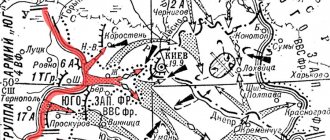US military operation against Iraq in 2003. Reference
As of March 19, a US-British force of more than 255 thousand people was deployed in the Persian Gulf region. The “southern” strike force was stationed in Kuwait and numbered about 100 thousand people. It consists of: 3rd Infantry Division of the US Army (18 thousand people), 101st Airborne Division (20 thousand people), units of the 82nd Airborne Division (5 thousand people), 1st Marine Division (26.5 thousand people) and the 1st Tank Division of the British Armed Forces (22 thousand people). These combat units were armed with more than 600 tanks (at least 430 American Abrams M1 and 180 British Challengers).
In the waters of the Persian Gulf, Eastern Mediterranean and Red Sea in close proximity to Iraq, there were 7 aircraft carrier strike groups consisting of 63 ships, 7 submarines and more than 400 aircraft and helicopters. In total, about 120 warships have been deployed to the area of upcoming hostilities. The total number of sailors and marines on board the ships was about 100 thousand people. The US Air Force and its allies numbered about 20 thousand military personnel and more than 300 aircraft. These forces were consolidated into ten air wings. The headquarters and command posts that coordinated the actions of the group of troops deployed in the Persian Gulf were located in Saudi Arabia (near Riyadh), Qatar (near Doha) and on the coast of Oman and Kuwait (near the border with Iraq).
By the beginning of March, Hussein's regular army numbered 389 thousand soldiers plus about 650 thousand reservists, that is, 24 divisions and 7 army corps. 2 corps were stationed in northern Iraq, blocking Kurdish formations, 1 on the border with Iran, and only 1 on the supposed front against the Americans, in the Basra region. The command kept the remaining forces near Baghdad. In addition, there were 5,000 armored vehicles, 300 airplanes and 400 helicopters.
On March 19, US-led coalition troops entered the demilitarized zone on the border between Kuwait and Iraq. On the same day, George Bush gave the order to begin military action. The expeditionary force was commanded by General Tommy Franks.
On March 20, 2003, at 5.35 Moscow time, the United States launched its first missile and bomb strike on Baghdad. American troops on the border of Kuwait and Iraq began intensive artillery preparation. Marine Expeditionary Units and the 3rd Mechanized Division crossed the Iraq-Kuwait border and began ground operations in Iraq. At 6.15 Moscow time, US President George W. Bush, speaking on national television, announced that troops of a coalition uniting 35 countries had begun an operation to disarm Iraq.
On April 9, coalition troops occupied Baghdad. On April 10 and 11, the other largest cities of Iraq - Kirkuk and Mosul - were taken.
The campaign lasted 43 days and ended on May 1.
The decision to use military force against Iraq was supported by 45 states of the world. Six of them are former Soviet republics (Azerbaijan, Georgia, Latvia, Lithuania, Estonia and Uzbekistan). 32 states contributed military contingents. 98% of the invasion troops were provided by the United States and Great Britain.
On March 20, 2003, Russian President Vladimir Putin, at a meeting in the Kremlin, made a statement in connection with the start of the bombing of Iraq by the armed forces of the United States and Great Britain. In a statement, Vladimir Putin called the military action against Iraq a big political mistake. The President of the Russian Federation stated that military actions against Iraq are being carried out “contrary to world public opinion, contrary to the principles and norms of international law and the UN Charter.”
Vladimir Putin's statement on Iraq was distributed on March 20 as an official document of the UN Security Council and the General Assembly, and was also sent to UN Secretary General Kofi Annan.
Costs of military operations : The cost of conducting military operations in Iraq, which lasted 720 hours, amounted to 917 million 744 thousand 361 dollars and 55 cents. This is equivalent to the share of US gross domestic product produced in 46 minutes 10.5 seconds in 2001. This conclusion was reached by the US Department of Defense, which provided statistical data on the results of the military campaign.
Losses. As of March 17, 2009, US troop losses in the Iraq War were:
— dead — 4259
— wounded (battle wounds only) — 31,102
— missing persons — 1.
There are 317 military personnel from 21 countries killed in Iraq. Great Britain lost the most - 179 military personnel.
Iraqi civilian casualties during the war are unknown and cannot be calculated with sufficient accuracy. According to some reports, more than 1 million people died.
As of March 2009, military personnel from more than 20 countries of the world who are part of the coalition forces are taking part in operations in Iraq.
There are 140 thousand US troops stationed in Iraq. In March 2009, the United States announced the withdrawal of 12 thousand American troops from Iraq by the end of September.
Results and consequences of the war in Iraq
Since 2014, the territory in western Iraq has been controlled by the self-proclaimed Islamic State of Iraq and the Levant (the so-called ISIS). At the same time, one of the largest Iraqi cities, Mosul, was captured. The situation in the country continues to be difficult, but nevertheless stable.
Today, Iraq is a US ally in the region and is fighting against ISIS. So in October 2022, an operation was launched, the goal of which is to liberate Mosul and completely clear the country of radical Islamists. However, this operation is still ongoing (July 2022) and there is no end in sight.
From today's perspective, we can say for sure that the invasion of Iraq by international coalition forces led more likely to the destabilization of the state than to any positive changes. As a result, many civilians were killed and injured, and millions of people became homeless. At the same time, the humanitarian catastrophe, the consequences of which are not yet fully visible, continues to this day.
Also largely a consequence of this war is the emergence of ISIS. If Saddam Hussein had continued to rule in Iraq, then, most likely, he would have radically stopped the creation of radical Islamist groups in the west of the country, thus destroying the Islamic State in the bud.
There are many monographs about the war in Iraq, but we can say with confidence that the invasion of US troops and their allies in Iraq only opened a new, bloody and truly terrible page in the history of the Middle East, which will not close very soon. However, what will happen next – time will tell.
Further course of hostilities
After the defeat of government troops, a partisan movement began to organize in the country. It united not only military men loyal to Hussein, but also representatives of various Islamist groups, including those close to al-Qaeda. Partisan detachments were most densely concentrated in the so-called “Sunni triangle,” which was located northwest of the Iraqi capital.
Partisan detachments destroyed infrastructure, carried out terrorist attacks, and attacked individual units of the coalition led by the United States. Losses in Iraq of allied forces increased during this period. The bulk of the dead and wounded were soldiers who were blown up by improvised explosive devices.
Meanwhile, at the end of 2003, Saddam Hussein was captured in one of the villages in Iraq. He was put on trial, following which the former dictator was publicly executed in 2006.
Attracting allies
The United States failed to obtain permission from the Security Council to use force in Iraq. Nevertheless, the American ruling circles ignored this and began to prepare for the invasion.
They also asked their NATO allies for help. But France and Germany refused to support the American invasion of Iraq without UN sanctions. But Great Britain, Poland and Australia expressed their readiness to support the United States with military force.
After the overthrow of the Hussein regime, other countries joined the coalition: Italy, the Netherlands, Ukraine, Spain, Georgia. Türkiye took part in the conflict as a separate force in 2007-2008.
The total number of troops of the international coalition contingent was about 309 thousand people, of which 250 thousand were US military personnel.
Background
First, let's delve a little into the background of this conflict.
Saddam Hussein became president of Iraq in 1979, although he actually concentrated the threads of governing the country in his hands long before that. His powers were equal to those of a dictator. No important issue in the country could be resolved without the consent of the president. Hussein used repression and torture against the opposition and periodically rebelling Kurds, which he even publicly admitted to. In addition, Hussein's personality cult began to develop in Iraq.
Already in 1980, the Iraqi army launched an invasion of the Iranian province of Khuzestan, thus unleashing the Iran-Iraq War. It is noteworthy that in this war both the USA and the USSR supported Hussein. But in the end, the war ended in nothing in 1988, since, according to the terms of the peace treaty, both countries maintained the status quo.
Saddam Hussein started a new adventure in 1990, when he occupied Kuwait and annexed it to Iraq as a province. This time, both the USA and the USSR condemned the actions of the Iraqi president. Moreover, the United States, with the support of the UN, formed an international military coalition that opposed Hussein. Thus began the first Iraq War, or, as it is otherwise called, the Gulf War. From the first days of the confrontation, the coalition had a significant advantage due to the fact that it used modern aviation.
It was a brilliant Allied operation led by the United States. Coalition casualties in Iraq amounted to less than 500 people, while the death toll among Iraqi forces reached several tens of thousands. As a result, Hussein was defeated and was forced to liberate Kuwait and significantly reduce the army. In addition, a number of other sanctions were imposed on the country, which were supposed to weaken the Iraqi armed forces.
Almost throughout the 90s of the 20th century, the hidden confrontation between Iraq and the United States grew. The Americans constantly accused Hussein of using repression against the opposition, as well as possessing prohibited weapons. The situation became especially aggravated after Hussein expelled UN observers in 1998, who were supposed to ensure that Iraq did not acquire weapons of mass destruction. The world was on the verge of a new war.
The situation after the withdrawal of American troops
After the withdrawal of American troops in Iraq, the situation worsened sharply. Many extremist and terrorist organizations have raised their heads. The most influential of them was the ISIS group, which then changed its name to the “Islamic State”, claiming supremacy throughout the Muslim world. It brought significant territories in Iraq under its control, and after the outbreak of the civil war in Syria, it extended its influence to this state.
The activity of ISIS has caused concern in many countries around the world. A new coalition led by the United States was created against this organization. Russia has also joined the fight against terrorists, although it is acting independently. The peculiarity of this operation is that the allies are only conducting air strikes in Syria and Iraq, but are not resorting to ground intervention. Thanks to the actions of the allies, the territory controlled by Islamic State militants has been significantly reduced, but the organization continues to pose a serious threat to the world.
At the same time, there are many other opposing forces, the contradictions between which do not allow peace to come to Iraq: Sunnis, Shiites, Kurds, etc. Thus, American troops have failed to ensure stable peace in the region. They left without completing one of the main tasks.
